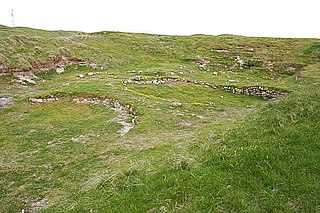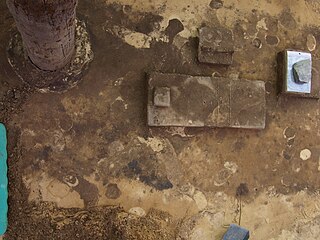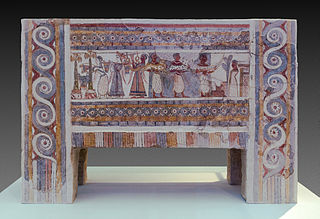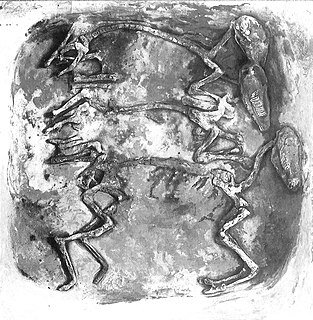 W
WAnegundi previously called Kishkindha is a village in the Gangavathi taluk, Koppal district in the Indian state of Karnataka, It is older than Hampi situated on the northern bank of Tungabhadra River, Huchappayana matha temple, Pampa Sarovar, Aramane, Ranganatha temple, Kamal Mahal, and Nava Brindavana are the major attractions Nimvapuram, a nearby village, has a mount of ash believed to be the cremated remains of monkey king Vaali. Anegundi is best visited along with Hampi, it is part of the world Heritage Site, Hampi, being developed into a world class tourism spot by engaging the locals to sensitise them to their cultural wealth and provide them a means of livelihood. Existing tanks in the village have been redesigned to store clean drinking water and proper drainage facilities developed to keep the surroundings clean and hygienic. The Kishkinda Trust is working on tourism development in Anegundi.
 W
WAnnigeri is a taluk of Dharwad district in the state of Karnataka, India, located 20 km west of Gadag en route to Hubli and 35 km from Hubli.
 W
WBergh Apton Anglo-Saxon cemetery is a late-5th to late-6th century Anglo-Saxon burial site discovered at Bergh Apton, Norfolk. The site was excavated in 1973 and 63 graves were found. The south and west portions of the site had previously been destroyed. The state of preservation of the skeletal remains was described as "very poor" due to the acidity of the soil and the sex of individuals was determined by grave goods. Grave goods found at the site included weapons, shields, spears and jewellery. One grave, possibly of a minstrel-poet, was found to contain a lyre similar to that found at Sutton Hoo. Twelve of the graves were those of children aged under 12 years. No evidence for an Anglo-Saxon settlement adjacent to the cemetery has been found.
 W
WThe Birecik Dam Cemetery is an Early Bronze Age cemetery in the Gaziantep region in southeastern Turkey. This cemetery was used extensively for a very short period of time at the beginning of the third millennium BC.
 W
WA bog body is a human cadaver that has been naturally mummified in a peat bog. Such bodies, sometimes known as bog people, are both geographically and chronologically widespread, having been dated to between 8000 BCE and the Second World War. The unifying factor of the bog bodies is that they have been found in peat and are partially preserved; however, the actual levels of preservation vary widely from perfectly preserved to mere skeletons.
 W
WA cairn is a man-made pile of stones. The word cairn comes from the Scottish Gaelic: càrn [ˈkʰaːrˠn̪ˠ].
 W
WChariot burials are tombs in which the deceased was buried together with their chariot, usually including their horses and other possessions. An instance of a person being buried with their horse is called horse burial.
 W
WCharon's obol is an allusive term for the coin placed in or on the mouth of a dead person before burial. Greek and Latin literary sources specify the coin as an obol, and explain it as a payment or bribe for Charon, the ferryman who conveyed souls across the river that divided the world of the living from the world of the dead. Archaeological examples of these coins, of various denominations in practice, have been called "the most famous grave goods from antiquity."
 W
WA cillín are historic burial sites in Ireland, primarily used for stillborn and unbaptized infants. These burial areas were also used for the recently deceased who were not allowed in consecrated churchyards, including the mentally disabled, suicides, beggars, executed criminals, and shipwreck victims.
 W
WA cist is a small stone-built coffin-like box or ossuary used to hold the bodies of the dead. Examples can be found across Europe and in the Middle East. A cist may have been associated with other monuments, perhaps under a cairn or long barrow. Several cists are sometimes found close together within the same cairn or barrow. Often ornaments have been found within an excavated cist, indicating the wealth or prominence of the interred individual.
 W
WCladh Hallan is an archaeological site on the island of South Uist in the Outer Hebrides in Scotland. It is significant as the only place in Great Britain where prehistoric mummies have been found. Excavations were carried out there between 1988 and 2002, indicating the site was occupied from 2000 BC.
 W
WThe Clava cairn is a type of Bronze Age circular chamber tomb cairn, named after the group of three cairns at Balnuaran of Clava, to the east of Inverness in Scotland. There are about 50 cairns of this type in an area round about Inverness. They fall into two sub-types, one typically consisting of a corbelled passage grave with a single burial chamber linked to the entrance by a short passage and covered with a cairn of stones, with the entrances oriented south west towards midwinter sunset. In the other sub-type an annular ring cairn encloses an apparently unroofed area with no formal means of access from the outside. In both sub-types a stone circle surrounds the whole tomb and a kerb often runs around the cairn. The heights of the standing stones vary in height so that the tallest fringe the entrance and the shortest are directly opposite it.
 W
WDartmoor kistvaens are burial tombs or cists from the late Neolithic and early Bronze Age, i.e. from c 2500 BC to c 1500 BC. Kistvaens have been found in many places, including Dartmoor, a 954 km2 area of moorland in south Devon, England. The box-like stone tombs were created when the ancient people of the area lived in hut circles. Cists are often to be found in the centre of a cairn circle although some appear solitary which could be the result of the loss of an original slight mound. There are over 180 known cists on Dartmoor although there could be up to 100 that remain buried underneath unexplored cairns. In the South West there are no cists to be found on the Quantock Hills, only 2 to be found on Exmoor and 58 to be found on Bodmin Moor. The Dartmoor cists are unique in that about 94% have the longer axis of the tomb orientated in a NW/SE direction It appears that Dartmoor cists were positioned in such a way that the deceased were facing the sun.
 W
WDomus de Janas are a type of pre-Nuragic chamber tombs found in Sardinia. They consist of several chambers quarried out by the people of the San Ciriaco through Ozieri cultures and subsequent cultures, resembling houses in their layout.
 W
WThe Egtved Girl [ˈektveð] was a Nordic Bronze Age girl whose well-preserved remains were discovered outside Egtved, Denmark in 1921. Aged 16–18 at death, she was slim, 160 centimeters tall, had short, blond hair and well-trimmed nails. Her burial has been dated by dendrochronology to 1370 BC. She was discovered together with cremated remains of a child in a barrow approximately 30 m (98 ft) wide and 4 m (13 ft) high. Only the girl's hair, brain, teeth, nails and a little of her skin remain preserved.
 W
WThe Embracing Skeletons of Alepotrypa are a pair of human skeletons dated as approximately 5,800 years old. They were discovered by archaeologists in the Alepotrypa cave in Laconia, Greece. The pair were dated to 3,800 BCE and DNA analysis confirmed that the remains belong to a man and woman who died when they were 20 to 25 years of age.
 W
WThe exhumation of Yagan's head was the result of a geophysical survey and archaeological dig at a grave site in the Everton Cemetery, Liverpool in 1997.
 W
WA flat grave is a burial in a simple oval or rectangular pit. The pit is filled with earth, but the grave is not marked above the surface by any means such as a tumulus or upstanding earthwork. Both intact human bodies and cremated remains were buried in the graves.
 W
WFukiishi were a means of covering burial chambers and burial mounds during the kofun period of Japan. Stones collected from riverbeds were affixed to the slopes of raised kofun and other burial chambers. They are considered to have descended from forms used in Yayoi-period tumuli. They are common in the early and mid-Kofun periods, but most late Kofun-period tumuli do not have them.
 W
WA gallery grave is a form of megalithic tomb built primarily during the Neolithic Age in Europe in which the main gallery of the tomb is entered without first passing through an antechamber or hallway. There are at least four major types of gallery grave, and they may be covered with an earthen mound or rock mound.
 W
WGhaba is a Neolithic cemetery mound and African archaeological site located in Central Sudan in the Shendi region of the Nile Valley. The site, discovered in 1977 by the Section Française de la Direction des Antiquités du Soudan (SFDAS) while they were investigating nearby Kadada, dates to 4750–4350 and 4000–3650 cal BC. Archaeology of the site originally heavily emphasized pottery, as there were many intact or mostly intact vessels. Recent analysis has focused on study of plant material found, which indicates that Ghaba may have been domesticating cereals earlier than previously believed.
 W
WGiants' tomb is the name given by local people and archaeologists to a type of Sardinian megalithic gallery grave built during the Bronze Age by the Nuragic civilization. They were collective tombs and can be found throughout Sardinia, with 800 being discovered there.
 W
WA grave field is a prehistoric cemetery, typically of Bronze Age and Iron Age Europe.
 W
WThe Hagia Triada Sarcophagus is a late Minoan 137 cm (54 in)-long limestone sarcophagus, dated to about 1400 BC or some decades later, excavated from a chamber tomb at Hagia Triada, Crete in 1903, and now on display in the Heraklion Archaeological Museum ("AMH") in Crete.
 W
WHanging coffins are coffins which have been placed on cliffs. They are practiced by various cultures in China, Indonesia, and the Philippines.
 W
WThe Haniwa are terracotta clay figures that were made for ritual use and buried with the dead as funerary objects during the Kofun period of the history of Japan. Haniwa were created according to the wazumi technique, in which mounds of coiled clay were built up to shape the figure, layer by layer.
 W
WThe Hasanlu Lovers are a pair of human remains found at the Teppe Hasanlu archaeological site, located in the Solduz Valley in the West Azerbaijan Province of Iran, in 1972 by a team from the University of Pennsylvania led by Robert H. Dyson. The skeletons have been the subject of debate since they were first excavated. They were exhibited at the Penn Museum from 1974 until the mid-1980s.
 W
WA jade burial suit is a ceremonial suit made of pieces of jade in which royal members in Han dynasty China were buried.
 W
WThe Fire Mummies of the Philippines, also known as the Kabayan Mummies, Benguet Mummies, or Ibaloi Mummies, are a group of mummies found along the mountain slopes of Kabayan, a town in the northern part of the Philippines. They were made from as early as 2000 BCE. Today, they remain in natural caves and a museum in Kabayan.
 W
WKhyad village is in Badami taluk in Bagalkot District in North Karnataka, popular for prehistoric structures, found many fossils of prehistoric Stone Age.
 W
WA kistvaen or cistvaen is a tomb or burial chamber formed from flat stone slabs in a box-like shape. If set completely underground, it may be covered by a tumulus. The word is derived from the Welsh cist (chest) and maen (stone). The term originated in relation to Celtic structures, typically pre-Christian, but in antiquarian scholarship of the 19th and early 20th centuries it was sometimes applied to similar structures outside the Celtic world.
 W
WKofun are megalithic tombs or tumuli in Northeast Asia. Kofun were mainly constructed in the Japanese archipelago between the middle of the 3rd century to the early 7th century CE.
 W
WThe Lovers of Cluj-Napoca are a pair of human skeletons discovered in 2013 by archaeologists in the cemetery of a former Dominican convent in Cluj-Napoca, Romania. The couple are believed to have lived between 1450 and 1550 – between the year the convent was established and the year the graveyard was secularised. Analysis by archaeologists confirmed that the skeletons belong to a man and a woman around 30 years of age. The couple were buried facing each other, and with their hands interlocked.
 W
WThe Lovers of Valdaro, also known as the "Valdaro Lovers," are a pair of human skeletons dated as approximately 6,000 years old. They were discovered by archaeologists at a Neolithic tomb in San Giorgio near Mantua, Italy, in 2007. The two individuals were buried face to face with their arms around each other, in a position reminiscent of a "lovers' embrace".
 W
WMagatama are curved, comma-shaped beads that appeared in prehistoric Japan from the Final Jōmon period through the Kofun period, approximately 1000 BCE to the 6th century CE. The beads, also described as "jewels", were made of primitive stone and earthen materials in the early period, but by the end of the Kofun period were made almost exclusively of jade. Magatama originally served as decorative jewelry, but by the end of the Kofun period functioned as ceremonial and religious objects. Archaeological evidence suggests that magatama were produced in specific areas of Japan and were widely dispersed throughout the Japanese archipelago via trade routes.
 W
WThe Maronite mummies are eight well preserved natural mummies of Maronite villagers dating back to around 1283 AD. They were uncovered by a team of speleologist/archaeologists during a rescue excavation in the Qadisha Valley of Lebanon in 1990. They are currently on display in the National Museum of Beirut.
 W
WThe mummies of Venzone are a number of mummies found in Venzone, Italy, in the 1600s. They were mummified by natural processes, and, while such mummies exist elsewhere, the cause of the Venzone mummies' preservation in particular still remains a mystery.
 W
WA mummy is a dead human or an animal whose soft tissues and organs have been preserved by either intentional or accidental exposure to chemicals, extreme cold, very low humidity, or lack of air, so that the recovered body does not decay further if kept in cool and dry conditions. Some authorities restrict the use of the term to bodies deliberately embalmed with chemicals, but the use of the word to cover accidentally desiccated bodies goes back to at least 1615 AD.
 W
WThe Mycenaean chamber tomb is the type of chamber tomb that was built by ancient Mycenaeans. This form of mortuary architecture was in use in the Late Bronze Age in the areas under the cultural influence of the Aegean.
 W
WThe Saitama Prefectural Museum of the Sakitama Ancient Burial Mounds is a museum in Gyōda, Saitama, Japan. The building is inside of Sakitama Kofun Park. It is one of Japan's many museums which are supported by a prefecture.
 W
WThe Saltmen were discovered in the Chehrabad salt mines, located on the southern part of the Hamzehlu village, on the west side of the city of Zanjan, in the Zanjan Province in Iran. By 2010, the remains of six men had been discovered, most of them accidentally killed by the collapse of galleries in which they were working. The head and left foot of Salt Man 1 are on display at the National Museum of Iran in Tehran.
 W
WThe secondary burial, or “double funeral” is a feature of prehistoric and historic gravesites. The term refers to remains that represent an exhumation and reburial, whether intentional or accidental.
 W
WA Shinjū-kyō is an ancient type of Japanese round bronze mirror decorated with images of gods and animals from Chinese mythology. The obverse side has a polished mirror and the reverse has relief representations of legendary Chinese shén, xiān, and legendary creatures.
 W
WShrubland Hall Anglo-Saxon cemetery is a 7th-century Anglo-Saxon burial site discovered at Shrubland Hall Quarry near Coddenham, Suffolk. The cemetery contains fifty burials and a number of high-status graves including "the most complicated Anglo-Saxon bed ever found." Bed burials, in which a female body is laid out on an ornamental wooden bed, usually accompanied by jewellery, are rarely found, and are considered of national importance. Only 13 bed burials have been found to date in the UK. The bed burial was one of two graves at the cemetery which were found within wooden-lined chambers. The second chamber contained a male skeleton with grave goods including a seax, a spear, a shield, an iron-bound wooden bucket, a copper alloy bowl and a drinking horn.
 W
WSidlaphadi near Badami in Karnataka, is a natural rock bridge and pre historic rock shelter. It is located at about four km. in the middle of a shrub jungle near the historic town of Badami. A bridle and kutcha path through sandstone hills from Badami leads to Sidlaphadi and there is no metal road to the spot. Sidlaphadi literally means in Kannada the Rock of lightning, derived from gaping holes in the natural rock arch, which was formed when a lightning struck. The natural rock bridge structure looks like a wide arch between two sandstone boulders. The rock structure has large, gaping holes in the arch and allows sunlight to enter inside which provides the required light for interiors. It was also a shelter for hunter-gatherer prehistoric people.
 W
WStone box graves were a method of burial used by Native Americans of the Mississippian culture in the American Midwest and Southeast. Their construction was especially common in the Cumberland River Basin, in settlements found around present-day Nashville, Tennessee.
 W
WThe Vorstengraf in Oss is one of the largest burial mounds in the Netherlands and Belgium. The hill was 3 metres high and had a diameter of 54 metres.
 W
WA gallery grave is a form of megalithic tomb built primarily during the Neolithic Age in Europe in which the main gallery of the tomb is entered without first passing through an antechamber or hallway. There are at least four major types of gallery grave, and they may be covered with an earthen mound or rock mound.
 W
WThe Wulfsen horse burial is an early medieval horse burial, consisting of three horses, that was discovered in 1974 in a Saxon grave field in the village of Wulfsen, in the German district of Harburg. The find was rescued as a varnish profile, which is on display in the permanent exhibition of the Archaeological Museum Hamburg in Harburg, Hamburg.